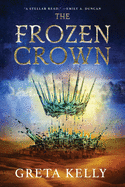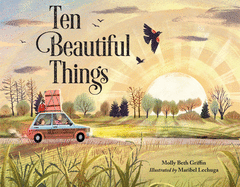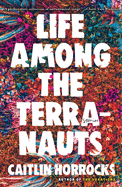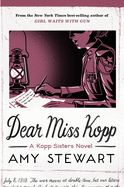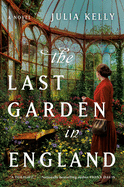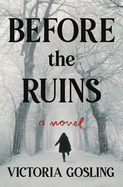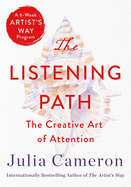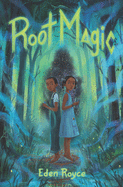Tuesday, January 12, 2021
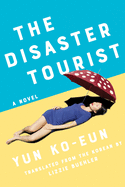 Some of the books I've been thinking about lately seem unsettlingly well-matched to our strange times. Consider Yun Ko-Eun's The Disaster Tourist (Counterpoint, translated by Lizzie Buehler). Yona Kim is a program manager for a Korean travel company that specializes in "surveying disaster zones and molding them into travel destinations…. Learning about misfortune was what Yona did." Even as I read this novel last summer, I was past wondering who might book such a trip (see Chernobyl tours). Ironically, thousands of people had just been rescued from Covid-laced cruise ships worldwide.
Some of the books I've been thinking about lately seem unsettlingly well-matched to our strange times. Consider Yun Ko-Eun's The Disaster Tourist (Counterpoint, translated by Lizzie Buehler). Yona Kim is a program manager for a Korean travel company that specializes in "surveying disaster zones and molding them into travel destinations…. Learning about misfortune was what Yona did." Even as I read this novel last summer, I was past wondering who might book such a trip (see Chernobyl tours). Ironically, thousands of people had just been rescued from Covid-laced cruise ships worldwide.
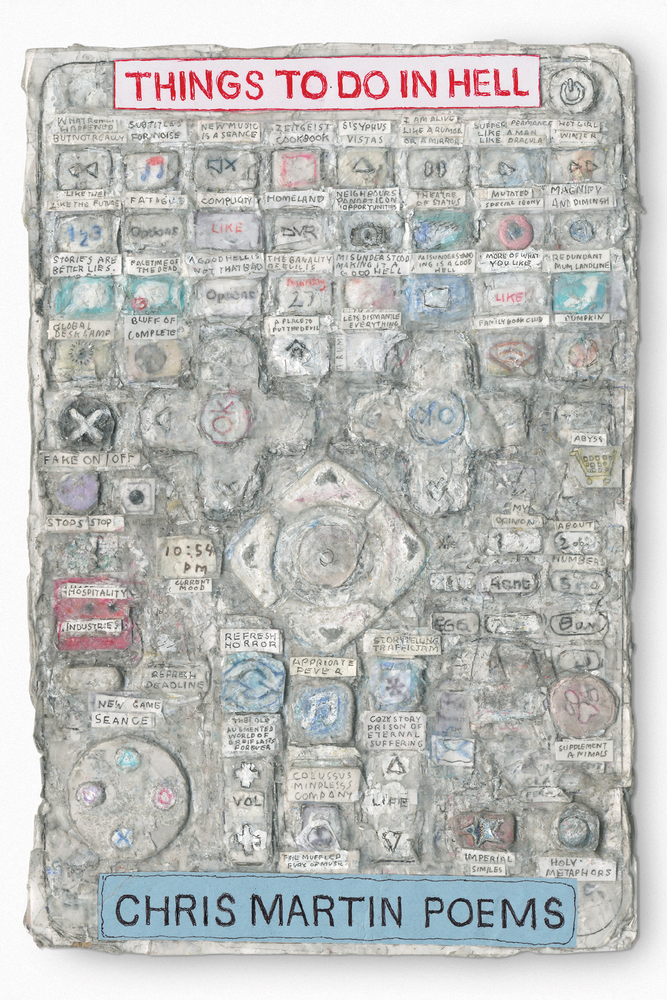 |
|
Then there was Chris Martin's well-timed poetry collection Things to Do in Hell (Coffee House Press). From the title poem: "DVR Homeland/ Imagine that hell is only an abstraction/ Take another free breath mint/ Cry out endlessly/ Blame those closest to you/ Love even the barest light pissing through the trees."
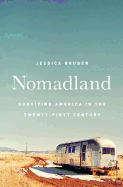 In nonfiction, I finally read Jessica Bruder's excellent book (now a movie) Nomadland: Surviving America in the Twenty-First Century (Norton), which explores the lives of "workampers" who hit the road as "a survival strategy in an era when Americans were getting priced out of traditional housing and struggling to make a living wage... And as bad as the situation is now, it's likely to get worse. That makes me wonder: What further contortions--or even mutations--of the social order will appear in years to come? How many people will get crushed by the system? How many will find a way to escape it?" Good questions all.
In nonfiction, I finally read Jessica Bruder's excellent book (now a movie) Nomadland: Surviving America in the Twenty-First Century (Norton), which explores the lives of "workampers" who hit the road as "a survival strategy in an era when Americans were getting priced out of traditional housing and struggling to make a living wage... And as bad as the situation is now, it's likely to get worse. That makes me wonder: What further contortions--or even mutations--of the social order will appear in years to come? How many people will get crushed by the system? How many will find a way to escape it?" Good questions all.
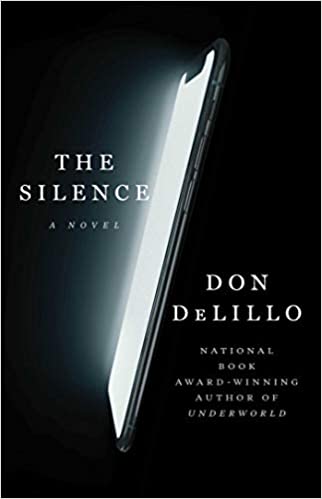 And soon Super Bowl LV will be played in a nearly empty Tampa Bay stadium, an odd complement (parallel universe?) to Don DeLillo's new novel The Silence (Scribner), in which characters are watching a Super Bowl on TV in a Manhattan apartment when a planet-wide blackout occurs. "Is this the casual embrace that marks the fall of world civilization?" someone wonders. The suspense is killing me. I'd better keep reading. --Robert Gray, editor
And soon Super Bowl LV will be played in a nearly empty Tampa Bay stadium, an odd complement (parallel universe?) to Don DeLillo's new novel The Silence (Scribner), in which characters are watching a Super Bowl on TV in a Manhattan apartment when a planet-wide blackout occurs. "Is this the casual embrace that marks the fall of world civilization?" someone wonders. The suspense is killing me. I'd better keep reading. --Robert Gray, editor
The Dangers of Smoking in Bed: Stories
by Mariana Enriquez, transl. by Megan McDowell
The Dangers of Smoking in Bed by Argentine writer Mariana Enriquez, translated from the Spanish by Megan McDowell, revisits themes found in her 2017 collection Things We Lost in the Fire. Her disquieting stories, populated by ghosts, disappeared adults and exploited children, examine economic pain, social unrest and violence through the lens of literary horror. Characters observing the slow burn of a society in decay find themselves asking, as the titular story does, "Why not just let the fire keep going and do its job?"
Supernatural elements become compelling metaphors for societal breakdown. In "The Cart," a poor neighborhood experiences bad luck after a homeless man--worse off than the people there--is driven away. "There had to be an accumulation of misfortune for the neighborhood to feel like something strange was going on," says the narrator. Jobs are lost, utilities turned off and food is hard to come by, causing people to turn feral to survive. The only family left untouched by bad luck, one that offered some comfort to the homeless man, is forced to flee before neighbors turn on them. "We were scared, but fear doesn't look the same as desperation," the son in this family knows.
In "Kids Who Come Back," children in Buenos Aires who were lost or disappeared begin to reappear, unchanged, at the same time. People have "no idea what was happening and couldn't explain it; they only knew that they were very afraid." It's impossible to miss the fear that permeates The Dangers of Smoking in Bed, yet even as these stories provide chills, they elicit a deep feeling of sadness for innocence lost. --Cindy Pauldine, bookseller, the river's end bookstore, Oswego, N.Y.
Discover: Societal breakdown and corruption is viewed through this unsettling collection of literary horror stories by an award-winning Argentine writer.
Life Among the Terranauts
by Caitlin Horrocks
Almost a decade since her debut collection, This Is Not Your City, Caitlin Horrocks returns with Life Among the Terranauts. The majority of these 14 stories deliver a gut-punch reminder of the seeming unavoidability of loneliness and isolation, despite the promises of coupledom, familial bonds and understood social contracts among various groups. Horrocks begins and ends with outwardly constructed worlds--a dilapidated shrinking town in the opening "The Sleep"; the manmade NovaTerra in the titular "Life Among the Terranauts"--which become constricting, even fatal, cages for the inhabitants. More and more citizens in "The Sleep" choose to hibernate rather than face the depressing reality of winter, while the six citizens carefully chosen to create "Life Among the Terranauts" realize too late they cannot fulfill their two-year residency contracts.
Horrocks's women are especially prone to solitary confinement, even while surrounded by others. In "Norwegian for Troll," a midwestern woman living alone in an oversized, aging house is visited by distant "cousins" from Norway she never knew she had. A gay woman who has a proud affinity with her dead grandmother, who seemed to live openly with her lover, faces jarring truths in "Sun City."
Bad decisions--knowing better, yet still acted upon--cause further estrangement in "23 Months," in which a woman new in town goes to a co-worker's party and sleeps with a stranger under false pretenses. While the collection might be filled with miscommunications and disconnects, Horrocks's storytelling prowess shines. She writes with simple precision, her characters wholly convincing in all their flaws and insecurities. Life Among the Terranauts proves shrewd and rewarding. --Terry Hong, Smithsonian BookDragon
Discover: These 14 stories hauntingly explore a modern world populated by men and women who, despite communities of family, friends and colleagues, ultimately remain alone.
The Inland Sea
by Madeleine Watts
One hundred twenty million years ago, during the Cretaceous period, a massive body of water called the Eromanga Sea bisected the continent of Australia. This sea was a panacea in the minds of Australia's early nation-builders, who saw it as the key to the agricultural success of their nascent empire, and a dark portent for their descendants, now contending with the consequences of a stripped environment. In Madeleine Watts's debut novel, The Inland Sea, a descendant of explorer John Oxley deals with a messy post-college life in Sydney while the latent effects of his colonial gaze unfold around her.
The unnamed narrator of The Inland Sea starts an ill-suited job at the telecom company where all of Australia's emergency calls are dispatched. She works odd hours, receiving only fragments of emergencies through her headset before transferring them to the proper channels. But it soon becomes clear that the car accidents, fires, freak storms, overdoses and inscrutable howls that fill her days leave a potent hangover. The novel is moody, progressing like a low-level fever as the narrator engages in the standard debauchery that defines the unmoored post-college years of many young adults. At the center of her unhealthy behavior is Lachlan, an ex-boyfriend she begins to sleep with again. The topography of the narrator's interpersonal life resembles that of Australia: "Lachlan," the narrator tells us, is not actually his real name. She named him after the river that once caused her grandfather John Oxley so much grief.
With The Inland Sea, Watts has produced a model of autofiction in the age of climate disaster, a genre sure to dominate the coming era. --Emma Levy, freelance writer
Discover: Introspective with a febrile realism that borders on the surreal, Madeleine Watts's The Inland Sea is evocative and haunting.
Dear Miss Kopp
by Amy Stewart
As World War I rages across Europe, former deputy sheriff Constance Kopp and her sisters are doing their bit for the war effort. Constance is undercover as an intelligence agent tracking down saboteurs and German spies; Fleurette is dancing and singing her way through army camps Stateside; and Norma is running her pigeon messenger program for the military from an undisclosed location in France. Amy Stewart paints a sharp-eyed picture of wartime challenges and a testy but tough sisterly bond in her sixth Kopp Sisters novel, Dear Miss Kopp.
Though Constance is often the series' main narrator, Fleurette and Norma get equal airtime in this epistolary novel. Urged by her sisters to write more than a few lines, Norma begins sharing episodes from French village life--and her roommate, Agnes, a nurse at the local hospital, begins adding notes of her own. When Agnes is accused of stealing medicines and Norma's pigeon program is put on ice, both women take matters into their own hands. Meanwhile, Fleurette is dealing with the vagaries of life on the road--including a parrot named Laura--and Constance is juggling investigative work and training a young female recruit. Stewart (Kopp Sisters on the March) captures these real-life sisters and their fictional voices with intelligence, wry humor and biting commentary on the sexism faced by women in and out of the armed forces. Letters fly thick and fast between France, New Jersey and Fleurette's various postings, providing warmth, wit and a satisfying mystery for both the sisters and their readers. --Katie Noah Gibson, blogger at Cakes, Tea and Dreams
Discover: Amy Stewart's sixth Kopp Sisters novel is a witty epistolary exchange about the sisters' investigations and other adventures during World War I.
The Last Garden in England
by Julia Kelly
For harried garden designer Emma Lovell, restoring the grand gardens at Highbury House is a dream job: she's walking in the footsteps of her heroine, Venetia Smith, the garden's original architect. But as Emma tackles the overgrown plants and other tasks, she also begins unearthing secrets. Julia Kelly's third historical novel, The Last Garden in England, weaves together Emma's present-day story with Venetia's time at the garden in 1907, as well as the lives of three women during World War II.
Kelly (The Light over London) tells her story in three timelines and five narrative voices, using the garden to bind them together. Her characters share a fierce determination to lead their own lives, no matter what society thinks: Venetia faces serious prejudice as a female landscape designer, but her striking garden rooms at Highbury House reflect her skill. Diana Symonds, the widowed owner of the house in the 1940s, struggles to mother her son and deal with the exigencies of having wounded soldiers on the premises. Beth Pedley, a shy land girl, begins to find a community in Highbury, and Stella Adderton, a young cook, dreams of travel and a professional career. In the present day, as Emma fights to keep her business afloat, she makes some discoveries that throw new light on the choices made by all four women, and that may help illuminate her own way forward. Lushly described, with complex relationships and plenty of romance, Kelly's narrative is a satisfying walk down the garden path. --Katie Noah Gibson, blogger at Cakes, Tea and Dream
Discover: Julia Kelly's lush third novel tells the intertwined stories of five women whose paths cross at a grand estate in Warwickshire.
Before the Ruins
by Victoria Gosling
Before the Ruins, Victoria Gosling's whip-smart debut, is narrated by 38-year-old Andrea, a compliance officer at a London investment fund. She made something of her life despite a hardscrabble upbringing, but her past is still a strong presence in her life. As the novel opens, Andrea gets a call from the mother of her lifelong best friend, Peter: it's been four weeks since the woman has been able to reach her son by telephone. "My instinct was to cover for him," Andrea confides to readers, "only I didn't know what I was covering for." Her own attempt to find Peter proves likewise a failure, so she hires a private detective but keeps up her own search.
In addition to their decades of friendship, what bonds Andrea and Peter is an incident that took place nearly 20 years earlier at the abandoned manor where Andrea, Peter, two close mates and sometimes others would hang out. In 1936, a man died on the premises and a diamond necklace was stolen from one of the houseguests. Andrea and her friends made a game of it, taking turns hiding a paste version of the necklace and searching the manor's grounds and Clue-board rooms for it. This stopped the night their blithesome contest ended grievously.
Public sex, drug taking and a sexual abuse subplot are just some of the ways that Before the Ruins departs from the classic country-house mystery. Peter's disappearance is so engaging, readers may occasionally wish that Andrea didn't tarry so long in the past. If only she had a choice. --Nell Beram, author and freelance writer
Discover: This debut novel--a mystery harboring a friendship saga--takes the ingredients of the English country house caper and spikes the recipe.
Siri, Who Am I?
by Sam Tschida
A young woman wakes up in a Los Angeles hospital bed, wearing a yellow Prada gown with a bloodstain on the hem. The only items in her possession are a tube of red Chanel lipstick and an iPhone with a cracked screen. She clearly has great taste--but what happened to her? Where is she? And who is she? In Sam Tschida's smart, snarky debut novel, the young woman (Mia) tries to piece together her life via social media posts, asking a question that may sound flippant but is in fact existential: Siri, Who Am I?
Told in Mia's first-person voice (studded with quippy footnotes and hashtags, also in Mia's voice), Tschida's narrative follows Mia's journey as she discovers she has a concussion and a high blood alcohol level of "mostly Grey Goose. Funny how I know what I drink, even if I don't know where I live," she muses. Soon, Mia is discharged from the hospital (though she wants to cling to her kindly nurse, Brenda) and finds her way back to a chichi house that appears in her Instagram feed, but that is evidently not hers. The housesitter, Max--who turns out to be a kind-hearted neuroscientist--doubts Mia's story at first, but he lets her stay and eventually joins in her quest to recover her identity. Mia combs her Instagram photos for locales and people who might be able to jog her memory, initially reveling in the sun-splashed parties and gorgeous companions in her photos. But as she uncovers more details of her past and present, she starts to wonder: Is the person she's been really the person she wants to be? (While Siri helps out with dates and directions, she remains stubbornly silent on this topic. Mia must wrestle with her questions of identity on her own.)
Tschida's story is at once a zany Memento-style ride, a rom-com of sorts (though Max is coming off a breakup and Mia, of course, has no idea who she is), and a sharp-edged, highly entertaining look at selfie culture. What people choose to share online, and how they share it--with edits, filters, hashtags, strategic cropping--can shape not only others' perceptions of their identities, but also affect how they perceive themselves. In Mia's case, it becomes increasingly clear that the highly edited, glamorous selfies in her feed are only a tiny slice of the story. Driving around Los Angeles in a borrowed Ferrari (it belongs to the absent JP, a French chocolate magnate who owns the house where Mia is staying, and is also apparently her boyfriend), Mia begins to build a mosaic-like picture of her life and career. Though she's genuinely searching for answers, her curiosity gets an uneasy reception even from the people she's supposedly closest to. The details that emerge, along with Max's steadfast kindness and decency, make Mia wonder if this could be a chance to start her life over. Was she a terrible person before, and if so, was she only self-centered, or actually scamming people? Can she build a life and relationships she'll actually be proud of? What is she going to do to pay the bills (of which there are apparently many)? And when will her memory of the night she was injured come back?
The novel's Los Angeles setting is the perfect backdrop for a story about image and reality. Mia's travels take her through neighborhoods that go from gritty to glamorous in mere blocks. Her previous career also straddles the line between glitz and harsh reality, and several encounters with Crystal, a no-nonsense former colleague (and possible frenemy) give Mia a dose of truth about her work and the person she was. Meanwhile, Max is trying to mop up the mess from a breakup with a colleague at his lab, which involved her sabotaging the lie detector they were working on together. Max may be a brilliant scientist--his Instagram handle is "Black Einstein," and he's definitely earned it--but when it comes to figuring out relationships, he may need a little help from the girl who's lost her memory.
Tschida's narrative plays with truth and lies, love and infatuation, and the notion of who a person is, or can become, when all the trappings of modern life (and even their e-mail inbox) are stripped away. Readers may cringe as Mia makes a few missteps--she might be trying, but she's far from perfect, and she can't even blame her head injury for all her mistakes. But Mia's journey is ultimately a story of growth: taking an honest look at uncomfortable truths and deciding to do better. By the end of the novel, Mia has decided to live up to her Instagram handle, @Mia4Realz, no matter how uncomfortable her filter-free life gets.
Wry and witty with surprising depth, Siri, Who Am I? is a satire of our Instagram-obsessed world, but it's also a sweet love story and an incisive look at one young woman's decision to change her life after it's been changed for her. --Katie Noah Gibson
Mystery & Thriller
The Perfect Guests
by Emma Rous
Emma Rous (The Au Pair) invites readers to Raven Hall in The Perfect Guests, a gothic thriller with a deep sense of place and a twining narrative that spans decades. In 1988, orphaned young teen Beth is taken in by a couple as a companion to their daughter, at an aging manor house set away from a small village in rural England. In 2019, floundering actress Sadie is hired to join a murder mystery party at the same home, newly renovated and soon to be rented out for more of these parties. A mysterious young woman tells her own story of Raven Hall in a third narrative, with Rous slowly revealing points of connection while building a creeping tension and dread throughout.
The present-day story is reminiscent of a less humorous and decidedly more gothic version of the film Clue. Characters are assigned names, such as "Miss Lamb," by the company that arranged the party and, when combined, an escalating series of small but creepy incidents add up to the classic gothic climax: running from the house screaming.
The past plot line feels like Anne of Green Gables gone horribly wrong. The Meyer-Averell family is reclusive for reasons unknown to Beth, and while her instincts tell her something's not right, she's also grateful that they've taken her in when her own aunt wouldn't. But at what point does gratitude lose out to self-preservation?
Raven Hall holds many secrets, and The Perfect Guests keeps Beth, Sadie and readers guessing as to whether the unease they feel is warranted and who's lurking around the corner. --Suzanne Krohn, editor, Love in Panels
Discover: Over the course of several decades, three young women come to Raven Hall hoping to secure their futures in this suspenseful gothic novel.
Science Fiction & Fantasy
The Frozen Crown
by Greta Kelly
Packed with deadly intrigue, fierce and powerful women, and high stakes, Greta Kelly's fantasy-adventure debut, The Frozen Crown, is an exciting and intricate series opener.
Princess Askia, warrior and rightful heir to the realm of Seravesh, needs an army to take back her kingdom from the forces of Radovan, the mad emperor of Rovan. Her best hope lies with Emperor Armaan of Vishir. An appeal to Armaan's handsome, naive son, Prince Iskander, gains Askia passage to Vishir, though it takes seeing a razed village to convince him.
Once in Vishir, Askia finds herself ill-equipped to navigate court politics. Plain-spoken and with no grasp on Vishiri etiquette, she quickly makes enemies. Even Iskander's support causes trouble for her; meeting the prince unchaperoned earns her the initial disdain of his mother, Queen Ozura, Armaan's principal wife. Askia's one offer of protection comes from the Shazir, a priesthood of witch-hunting zealots who once tortured her and murdered her parents, and she could not accept it if she wanted to. Askia is secretly a death witch, able to see and speak with ghosts, and the Shazir would want her dead if they knew.
Borrowing the young adult fantasy genre's staple of a young woman shouldering great responsibility while coming into her power, Kelly's series should have crossover appeal to YA readers as well as adult fantasy readers. Kelly leaves some world-building details for later installments, but still creates a rich political dynamic while magic users dodge religious fanatics whose influence is growing. The Frozen Crown has the hallmarks of a successful series. --Jaclyn Fulwood, blogger at Infinite Reads
Discover: The first in a fantasy series, this debut features strong women, plenty of political intrigue and a magical world ripe for future exploration.
Biography & Memoir
Aftershocks: A Memoir
by Nadia Owusu
A stepmother's unwanted visit, a mother's unexpected phone call, a lover's departure--all happening in a single month--precipitated the breakdown that eventually engendered Whiting Award winner Nadia Owusu's penetrating memoir, Aftershocks.
Owusu spent her youth navigating multiple countries, with inconsistent permutations of family. Born to an Armenian American mother, Almas (who deserted Owusu at two), and Ghanaian father, Osei (whose United Nations career meant repeated relocations), Owusu learned early that "moving on was what we did." Osei remarried a Tanzanian woman, Anabel. Owusu's only stability was her unwavering bond with her father. When he died before Owusu's 14th birthday, with nowhere else to go, Owusu endured the rest of her childhood with the negligent, sometimes abusive Anabel.
At 18, Owusu arrived in New York City for college and stayed. A decade later, Owusu reluctantly meets Anabel for a fraught dinner, during which Anabel, in a moment of spite, insists Osei died of AIDS, not cancer. The allegation begins to mar his near-faultless legacy--that he could have cheated, could have lied--further unsettling Owusu's already fragile, medicated sense of self. Safe refuge seems to appear in a discarded blue chair she lugs home to her apartment. This one "felt familiar.... It felt almost like sitting on my father's lap." And there she remained, reexamining the many shocks that left her untethered. After seven days, she finally rises, to make her own solid, habitable world.
Beyond any imperfections, Owusu's raw vulnerability hauntingly, steadily beckons readers. By gathering "all the places I tried to belong to and all the people I long for," Owusu wills herself whole. --Terry Hong, Smithsonian BookDragon
Discover: Nadia Owusu examines the many ways her fractured family and their peripatetic relocations contributed to the aftershocks that led to her mental break at 28.
Reference & Writing
The Listening Path: The Creative Art of Attention
by Julia Cameron
Julia Cameron's The Artist's Way revolutionized many people's approach to creativity. In The Listening Path, Cameron shares her experience and wisdom and warmly invites readers to add a daily walk to their tool kits, as a means of tapping into the moment and paying attention.
The Artist's Way caused a tectonic shift in opening the way to creativity; The Listening Path asks readers to go deep within, and will most benefit those who've embraced Cameron's previous book. The six-week practice offered here includes personal anecdotes and also interviews with people Cameron considers excellent listeners, from actors and authors to a physical trainer and real estate agent. After a brief refresher in which she expands on and deepens the practice of daily Morning Pages and weekly Artist's Dates, Cameron introduces a more meditative practice, refined with the benefit of time and experience. Week One begins gently, with "Listening to Our Environment," and suggests readers keep a log of their daily soundtrack (the alarm clock, the microwave buzzer). In Week Two, "Listening to Others," she encourages readers to observe in conversations who is "rehearsing what they will say next... [and] aren't truly present" versus those who really listen. Cameron moves readers from a tangible practice into a spiritual realm in the next three weeks. She urges open-mindedness; as the mind quiets, what she calls the "still small voice" may emerge, whether it's a voice within or the voice of a loved one.
Cameron closes with "Listening to the Silence," and readers who make a practice of her ideas will gain a newfound appreciation of being fully attentive to the present, aware and listening. --Jennifer M. Brown, senior editor
Discover: With warmth and wisdom, the writer behind the revolutionary The Artist's Way takes readers deeper into the creativity to be found when they listen attentively and are fully present.
Children's & Young Adult
Ten Beautiful Things
by Molly Beth Griffin, illus. by Maribel Lechuga
Ten Beautiful Things is a gentle, affecting story about a young girl coming to terms with leaving her home behind to move in with her Gram.
All Lily knows about where she will live with Gram is the "X" marked on "an empty patch of land" on her map. Gram, knowing change is hard, suggests the pair work together to find 10 beautiful things along the way to Iowa. Lily doubts they will find beauty, but when dawn breaks, she's awed by a magnificent sunrise--she's found "number one!" They drive on and, just as Lily feels "the complaints starting in her belly again," Gram points to number two: "spinning windmill blades" that gleam in the morning sun. Lily quickly finds number three, "a red-winged blackbird perched on a swaying stalk of last year's corn," and the two travelers continue their search for all 10 things, finding a "falling-apart barn," the rich smell of mud and a swan-shaped cloud.
Molly Beth Griffin (Rhoda's Rock Hunt) never explains the reason Lily must make her home with Gram. Instead, she packs her eloquent text with sensory details that masterfully link Lily's inner and outer journeys. Likewise, Maribel Lechuga's deftly colored and textured mix-media illustrations feature grand vistas as well as intimate closeups of the grandmother and granddaughter, evoking the unfolding wonders of this difficult trip. Ten Beautiful Things is a deeply touching, ultimately uplifting story. By the end of the drive, readers will know without a doubt, just as Lily does, that she now belongs here, with Gram. --Lynn Becker, blogger and host of Book Talk, a monthly online discussion of children's books for SCBWI
Discover: In this deeply touching story, Lily must move to Iowa to live with Gram, who suggests they find 10 beautiful things along the way.
Root Magic
by Eden Royce
In Eden Royce's impressive and complex debut novel, it's 1963, and Jezebel Turner and her twin brother, Jay, have just buried their grandmother. As the children grieve, they must also contend with a major shift outside the home: integration has come to their South Carolina island.
Jezebel, who is skipping a grade and leaving Jay behind, is having trouble making friends. Adding to her loneliness is an extrasensory perception: Jezebel hears and sees things nobody else seems to notice. The Turners are known for being rootworkers (the Gullah Geechee term for magic readers may know as "hoodoo or conjure or a host of other names") and, while many members of the community benefit from root magic, few would ever admit to such a thing. Now that the twins are 11, Jezebel's uncle will begin to teach them how to work root--exactly at a time they might end up needing to use it. The twins are scared because a thoroughly non-supernatural evil--a white cop--is intent on meddling with and terrorizing their mother.
Royce, herself a member of the Gullah Geechee nation, has created a dark and evocative middle-grade novel in Root Magic. She elegantly melds everyday aspects of life--such as the Turners' code-switching and using Gullah (which is contextually translated)--with tween angst, folklore and horrors both rare and familiar. --Sarah Hannah Gómez, freelance critic and doctoral candidate, University of Arizona
Discover: An 11-year-old faces supernatural forces with the help of her family's magic.



